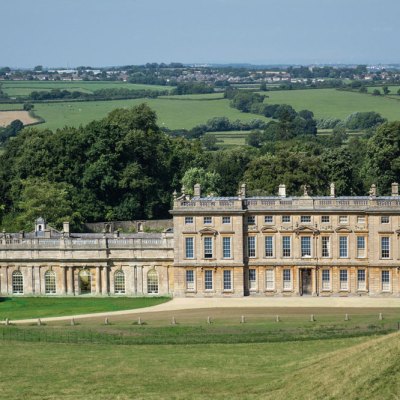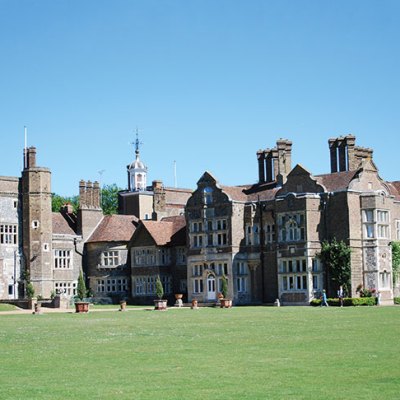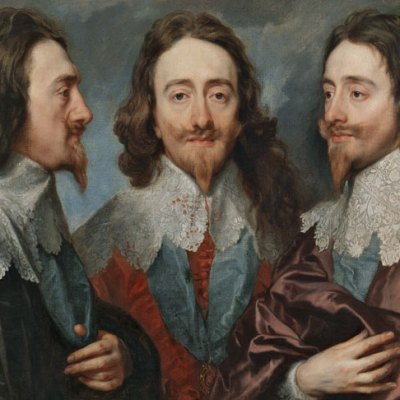From the May 2021 issue of Apollo. Preview and subscribe here.
On 9 November 1985, Princess Diana and John Travolta took to the dance floor in the Cross Hall of the White House, as the soundtrack to Saturday Night Fever played. The 80 guests in attendance had been hand-selected by President Reagan and First Lady Nancy Reagan, combining Hollywood stardust with the American political and social elite. Reagan wrote in his diary that:
The dinner for the prince & Diana was a great success. It had not a hint of ‘State Dinner’ flavor. Everyone seemed to have a wonderful time. Ted G[raber] had decorated the W.H. more beautifully than we’ve ever seen it. Leontyne Price sang wonderfully & then everyone danced like at a Junior Prom.
This Junior Prom, replete with peach linens and pastel roses with maidenhair ferns, was in fact a dinner to celebrate the Prince and Princess of Wales as patrons of the blockbuster exhibition ‘Treasure Houses of Britain: Five Hundred Years of Private Patronage and Art Collecting’, which had opened a week earlier at the National Gallery of Art, in Washington, D.C.
The exhibition was also a phenomenal success. During the five-and-a-half month run, 990,474 visitors saw 700 objets d’art from more than 200 country houses in England, Scotland, Wales and Northern Ireland, organised across 35,000 square feet of galleries. The list of lenders was an A to Z of country houses, some open and some not so open to the public, from Badminton and Bourne Park to Warwick Castle and Wilton House.
View of the Jacobean Long Gallery created for ‘Treasure Houses of Britain: Five Hundred Years of Private Patronage and Collecting’ at the National Gallery of Art, Washington, D.C. in 1985. Photo: courtesy National Gallery of Art, Washington, D.C.

Concrete exhibition spaces were transformed into composite country houses, demonstrating the chronological progression of taste from the Lumley Horseman (c. 1580) through to a silver cigar humidor from 1978 in the form of Easton Neston. National Gallery technicians created versions of a Jacobean Long Gallery (modelled from Daniel Mytens’ portrait of Aletheia Talbot, Countess of Arundel of c. 1618) and of a Regency picture gallery (inspired by Attingham Park) alongside the 15 other display spaces.
‘Treasure Houses’ was an exhibition that understood country houses and their owners in a very particular way. It made the case for their cultural significance with a good deal of hyberbole, charting, in the words of the NGA’s director John Carter Brown III, ‘how the synthesis of nineteen or twenty generations of art collecting that is the essence of so many British houses was achieved’. This multi-generational commitment had enabled country houses to become ‘vessels of civilization’ and ‘works of art in their own right, filled with priceless objects, either commissioned or collected’. The exhibition’s 680-page catalogue celebrated ‘the civilizing role they have played in our national life over the last five hundred years’, and looked forward to this civilising mission reaching ‘a still wider international audience’.
‘Civilising’ is certainly a loaded term in the context of current debates about Britain’s imperial past. But the widespread surprise – whether real or exaggerated – and resistance with which ongoing research into the colonial connections of country houses has recently been met in the right-wing press and among Conservative politicians suggests that country houses still occupy a prominent place in the national psyche.
What has been less explored, however, is the question of what a museum exhibition dedicated to country houses can do that a visit to the ‘real thing’ cannot. Do exhibitions liberate objects from the country house? Might this act of liberation enable curators to ask more challenging questions of these objects or interest different audiences? Can ‘Treasures of…’ exhibitions aim to do anything more than swell institutional bank balances and perpetuate well-worn narratives? Can future country house exhibitions include contributions from community partners, activists, artists and digital technology specialists to make the most of showing these objects within a museum?
Critics in the winter of 1985 had some reservations about the ‘Treasure Houses’ exhibition. For the New York Times, it was ‘a mirage confected with subtle persistence […] both a walk-through encyclopedia of the very highest class and a consummate work of fiction’. Iain Pears, writing in the Oxford Art Journal, attributed the remarkable visitor numbers to the exhibition’s lack of intellectual ambition: ‘It was a collection of pretty things brought together by the fact of their association with the country house and not much more’. In the TLS Linda Colley concluded that the exhibition was ‘cultural propaganda by the private country house owners’ lobby’ designed to convince audiences that they were guardians of totemic symbols of Englishness.
‘Treasure Houses’ was not the first time that items from an English country house travelled to the United States, nor would it be the last. Between 1979 and 1980, ‘Treasures from Chatsworth: The Devonshire Inheritance’, toured six American museums. The 194 loans ranged from family portraits through to furniture and china. Sir Anthony Blunt, in the exhibition catalogue, deployed the tropes of English exceptionalism and multi-generational commitment that would be reiterated by John Carter Brown six years later:
It is therefore only in England that houses like these are to be found, and it is no exaggeration to say that even in England it would be hard to name another house in which the features of the species are found so splendid and complete as they are at Chatsworth. But its creation was not achieved in a day: it took three hundred years and the work of ten generations of Cavendishes.
Installation view of ‘The Devonshire Inheritance: Five Centuries of Art Collecting at Chatsworth’ at the Bard Graduate Center, New York, in 2004. Photo: courtesy Bard Graduate Center; The Devonshire Collections

Sixty-four of the same objects from Chatsworth returned to the United States in 2003 for another six-venue tour as part of a larger exhibition, ‘The Devonshire Inheritance: Five Centuries of Collecting at Chatsworth’, which included 250 items. Nicolas Barker’s catalogue emphasised a shift in focus from the collection, to the collector.
A large number of these items crossed the Atlantic for a third time in 2019 for ‘Treasures from Chatsworth: The Exhibition’, organised in collaboration with Sotheby’s. This exhibition, for which I acted as a consultant, underscored how the collection had evolved to reflect the interests of successive generations. Alongside a pair of Venetian views by Canaletto and a selection of Old Master drawings, we included more recent examples of collecting and commissioning, including furniture by Joseph Walsh, ceramics by Pippin Drysdale and Michael Craig-Martin’s Digital Portrait of Laura, Lady Burlington (2010), which we placed alongside Gainsborough’s Georgiana, Duchess of Devonshire and John Singer Sargent’s Evelyn, Duchess of Devonshire. Emphasising this continuity of collecting enabled the exhibition to be as much about the present and the future as it was about the past.
Rather than replicating specific rooms or displays, the exhibition’s designer, David Korins (set-designer of Hamilton), instead abstracted decorative details from the house in Derbyshire. He wanted to focus the visitor’s attention on ‘the littlest, most incredible detail that you might not get if you were just moving through these rooms one at a time’. The aim was to create a theatrical experience; remixing the essence of Chatsworth for an upscale audience on the Upper East Side.
Chatsworth has not been alone in organising touring exhibitions to the United States. Two touring exhibitions, ‘Italian Paintings from Burghley House’ and ‘The Cecil Family Collects: Four Centuries of Decorative Arts from Burghley House’, circulated in the mid 1990s and in 2014 a ‘Houghton Hall: Portrait of an English Country House’ opened in Houston. The Houghton show, in particular, addressed the challenge of conjuring the essence of William Kent’s interiors by placing objects in themed vignettes to replicate specific spaces, and through the use of life-sized photographic renderings of architectural features. With advances in virtual, augmented and mixed reality technologies improving all the time, one wonders whether future exhibitions will feel the need to create these stage sets at all. At the National Gallery in London in 2019, for instance, ‘Virtual Veronese’ used augmented and virtual reality headsets to enable visitors to return The Consecration of Saint Nicholas to the abbey church of San Benedetto Po from where it had been removed on Napoleon’s orders in 1797.
‘Treasures of…’ exhibitions have had a particular attraction for the American museum-going public, and enhance the international reach of the country houses in question. Back in the UK, one might speculate on the limited success of ‘Treasures of…’ exhibitions, where geographical proximity makes a visit to a country house that much easier. Whether the subject of exhibitions or not, country houses and public museums in the UK have been closely linked for well over a century. Country house collections have provided the stock – either through purchase, donation or acceptance-in-lieu of taxation – of national and regional museums, while their owners have long found a position in the meeting rooms of museums as trustees. And in a tradition stretching back to the ‘Art Treasures of Great Britain’ exhibition held in Manchester in 1857, loans from private and conservation charity-owned country house collections continue to play a significant part in the temporary exhibition programmes of museums.
The recent ‘British Baroque: Power and Illusion’ (Tate Britain) and ‘George Stubbs: All Done From Nature’ (MK Gallery) exhibitions benefitted from a particularly high proportion of loans from country house collections, with some paintings seen in public for the first time. The country house origins of these loans could be noted by an especially curious visitor, but more often than not inclusion in a particular exhibition is due to the role the work can play in advancing the show’s narrative arc. Recently, there has been some traffic the other way. The National Portrait Gallery’s ‘Coming Home’ project has sent portraits of famous individuals to places with which they were associated. A full-length portrait of Sir Francis Drake returned ‘home’ to Buckland Abbey and Lord Byron made his way back to Newstead Abbey, where he lived from 1808 to 1814. The language associated with the programme implies that loans back to country houses add, or reassert, a layer of meaning that is somehow missing in a museum context.
Poster for ‘The Destruction of the Country House: 1875–1975’ exhibition at the Victoria and Albert Museum, London, in 1974.

When the country house as an entity has formed the focus of museum exhibitions in the UK it has rarely been a critical or commercial success. The V&A’s ‘Destruction of the Country House’, which attracted 42,555 visitors between October and December 1974, is the famous exception to this rule. It had a polemical message, and the design of its ‘Hall of Destruction’ emphasised the elements of the country house at risk from the financial reforms proposed by the UK Chancellor of the Exchequer, Denis Healey. The museum’s director, Roy Strong, was directly motivated by the prospect of new capital taxation, which, if applied to owners of country houses, would see ‘the end of a thousand years of English history and culture, as pell-mell the contents are unloaded into the saleroom, the houses handed over to the Government or demolished. I can’t tell you the horrors looming unless one fights and intrigues at every level behind the scenes.’
The new wealth tax never materialised, and by the late 1990s celebrating the survival of asset-rich owners of country houses in public museums felt rather out of step with the mood of the nation. On visiting Tate’s two-room display, ‘In Celebration: The Art of the Country House’ (1998), Martin Gayford concluded in the Spectator that a far more appropriate title was ‘In Celebration: The Attics of the Country House’.
Casting an eye to the future, rather than acting as poor proxies for the houses themselves, or duplicating the interpretative tools used within a country house context, museums must make the most of the latest research, to bring to life the local, regional, national and colonial networks that powered and sustained everything from artistic patronage through to dynastic succession.
Taking objects and collections out of different country houses and placing them side-by-side would enable a series of richer comparisons whether the topic be 17th-century European court culture, interactions with the 18th-century Caribbean, 19th-century India and Africa, or the 20th-century fictions that have to a large degree separated country houses from their global hinterlands in the popular imagination. ‘Prized Possessions: Dutch Masterpieces from National Trust Houses’ (Holburne Museum and Mauritshuis, 2018) provides a model for this kind of exhibition that seeks to interweave country houses with wider concerns. Moving beyond objects presented and generally understood only in their finished state and country house setting, the exhibition space could capture the back-and-forth movement of ideas, people and goods that constituted country houses in their heyday. Much would be gained through connecting objects more closely to the lives that were lived around them. Exhibition spaces could present different themes, ideas and narratives about country houses with both a depth of analysis, and a format of display, that is very challenging to do in the buildings themselves.
Museum spaces could also be used to tame the ghosts of fictional houses, from Brideshead to Bridgerton’s Clyvden Castle. Much could be done in an exhibition space to connect the facts of country house life and collections, with the literary and television fictions that have been read and watched by millions. The paper houses of Howards End, Wuthering Heights, Manderley and Pemberley have been just as significant as their bricks-and-mortar inspirations in shaping our image of the country house as an enclosed setting for interpersonal dramas. A starting point for this future exhibition could be Virginia Woolf’s manuscript for Orlando, part of the National Trust’s collections at Knole, where the time-travelling and gender-changing protagonist moves through the sedimented layers of country house space.
Installation view of Lady Mary’s bedroom in ‘Downton Abbey: The Exhibition’ at the Biltmore Estate, North Carolina in 2020, produced by Imagine Exhibitions Inc. Downton ™ and Downton Abbey; 2020 Carnival Film & Television Ltd. A Carnival Films/Masterpiece Co-Production. All Rights Reserved

Some halting steps have been taken in this direction already. ‘Costumes of Downton Abbey’, an exhibition of 40 historically-inspired costumes from the TV show, remains the Winterthur Museum’s most popular exhibit. ‘Dressing Downton: Changing Fashions for Changing Times’, drew impressive visitors numbers across its nine stops from the Biltmore Estate to the Lightner Museum. A third Downton exhibition, organised by Imagine Exhibitions, Inc., has already visited New York, Florida, Boston and the Biltmore. The purpose of these exhibitions, however, has not been to analyse the role played by period dramas in creating a reassuring tonic to soothe contemporary anxieties.
In this time of increasing polarisation about how to discuss Britain’s past, exhibitions about country houses and their collections could make a significant contribution to more fruitful conversations; ones that resist the power of nostalgia, while refusing to reduce the complexity of history to a battle between the forces of reaction and the march of progress, either in the past or present.
From the May 2021 issue of Apollo. Preview and subscribe here.


